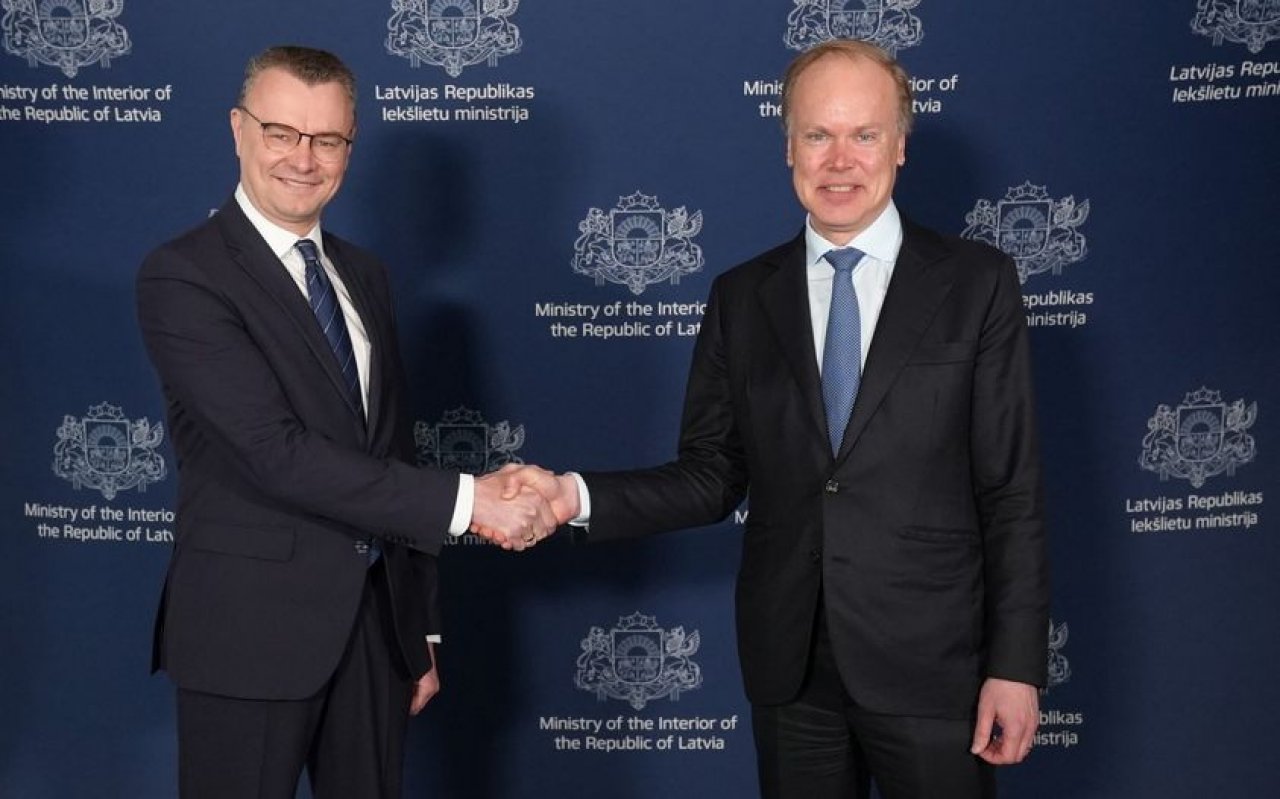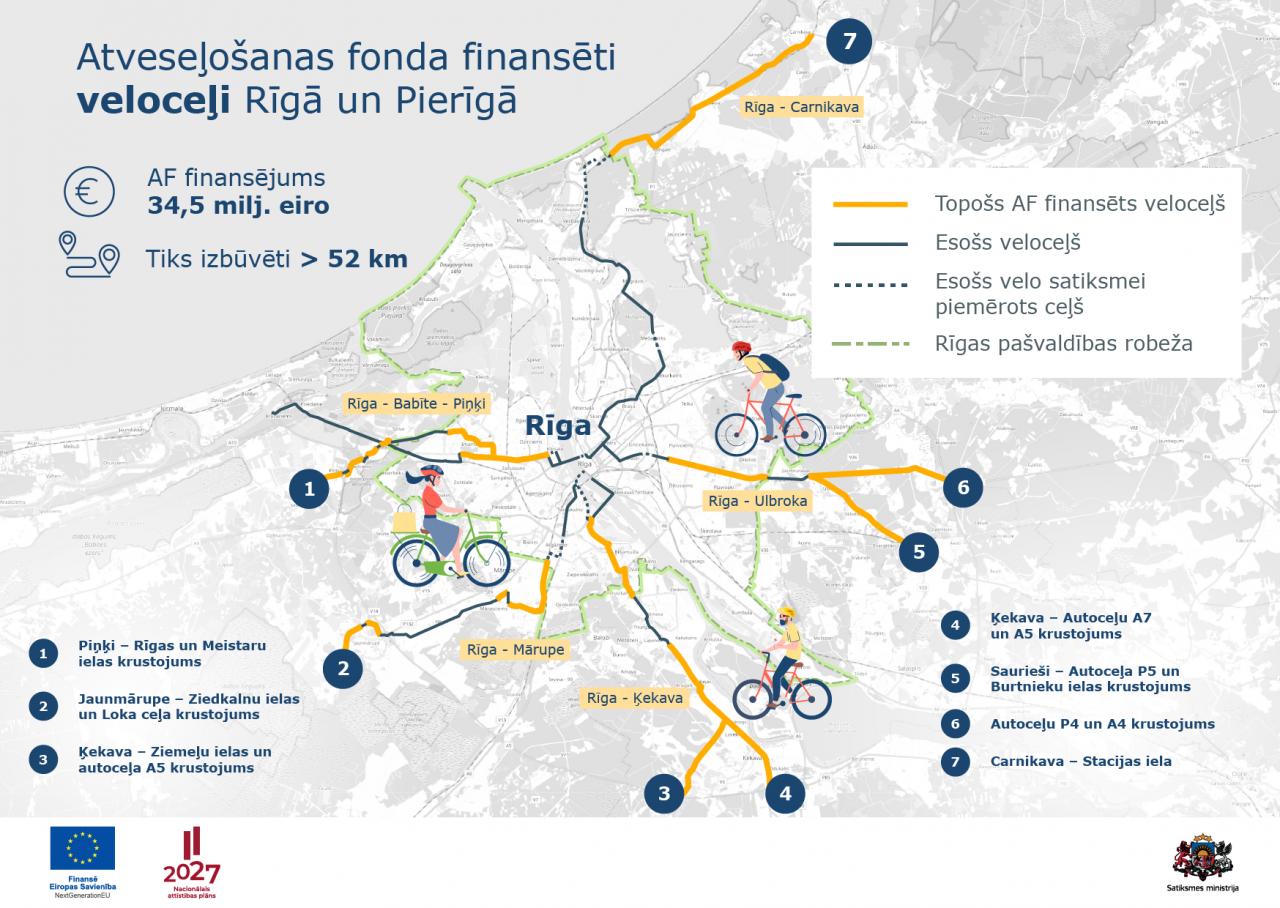The Ministry of Transport (MoT) has developed regulations and submitted them to the Legislation Public Portal (TAP) providing €24.5 million investment to the development of inland intermodal terminals or "dry ports" under the European Union (EU) Cohesion Policy Programme 2021-2027, ensuring the shift of freight from road to rail infrastructure. "The development of dry ports is one of the measures that will reduce greenhouse gas (GHG) emissions from transport and improve environmental quality, thus contributing to Europe's green objectives.
"With "dry ports" we can simultaneously relieve the roads of freight transport and support entrepreneurs"", says Minister of Transport Kaspars Briškens.
The MoT provides for the construction of public infrastructure and development of intermodal connections to facilitate the shift to more environmentally friendly modes of freight transport, as well as to improve multimodal freight transport opportunities. It is foreseen to develop 2-3 multimodal terminals for regular container and semi-trailer handling (in Latgale and Vidzeme, e.g. Rezekne, Daugavpils, Valmiera), stacking yards for logs, (e.g. in Madona, Gulbene, Ludza, Krustpils, Jelgava, Saldus, Stende), development of rail infrastructure connections primarily for the grain and timber industries (e.g. in Valka, Daugavpils, Vangaži, Inčukalns, etc. c.).
In Latvia, pellets are traditionally transported by rail, while logs and other wood products are transported by road transport. Inland rail transport of cereals competes with road transport. Intermodal terminals are expected to improve the efficiency of transport infrastructure by reducing congestion at seaports and creating the conditions for faster customs processes and procedures. Trade facilitation will contribute to increasing the competitiveness of local producers, which will help accelerate sustainable economic growth and create employment opportunities.
The EU White Paper highlights the need to shift 30% of freight from road to rail and inland waterways by 2030, and more than 50% by 2050. One of the key mechanisms to achieve this is to improve the efficiency of intermodal terminals, such as dry ports, and to strengthen the links between rail, sea and road networks. The European Commission's Strategy for Sustainable and Smart Mobility calls for a significant modal shift from road to rail, inland waterways or short-sea shipping. The aim is to ensure the sustainability and integration of transport networks in all Member States, pointing out that intermodal terminals and ‘dry ports’ play a key role in reducing carbon emissions by promoting the use of rail and waterways, which are more energy-efficient and less polluting than road transport.
Latvian planning documents also emphasize the need to encourage a shift to rail in freight transport. Latvia's 2030 Sustainable Development Strategy aims to limit the irrational use of freight transport and to promote the use of freight transport with the lowest pollutant emissions per unit of freight transported and per vehicle mass, thus using railways and ports for freight transport as much as possible and roads less.


